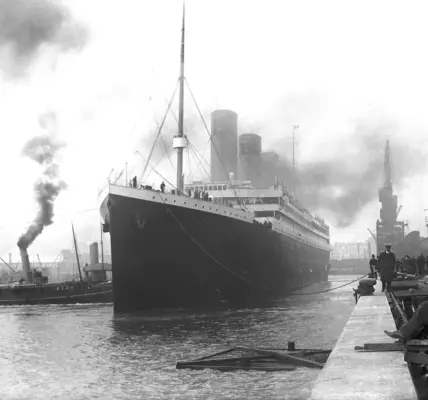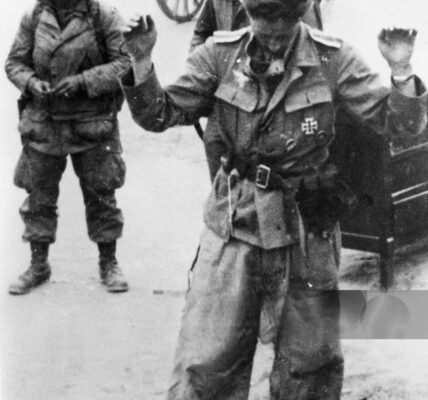
The image depicts a scene that may seem unspectacular at first glance: A group of German soldiers descend a stone staircase deep into an underground passage with vaulted masonry. But precisely such places were of great importance during the Second World War – sites for camouflage, preparation, communication, or even escape.
Underground facilities played a central role in the daily military operations of many European armies. They served as ammunition depots, command posts, air-raid shelters, or secret retreats. Especially in the final years of the war, when the Allies gained increasing air superiority, a significant portion of military operations shifted underground.
The image could have been taken in occupied territory or within Germany itself. The soldiers’ uniforms suggest regular troops, possibly of the Wehrmacht. The fact that they are descending a staircase into a vault allows for various interpretations: Was it securing a secret depot? A search? An escape? Or perhaps an inspection of an abandoned complex?
Many German cities possessed an extensive system of cellars, tunnels, and bunkers – some dating back to earlier centuries, others newly constructed during the war. These facilities offered both civilians and soldiers protection from bombing raids. At the same time, they were also used for military purposes: radio installations, map rooms, archives, and storage facilities were located deep underground.
Particularly well-known are underground facilities such as “Project Riese” in present-day Poland or the rocket program in Nordhausen, which was implemented in a mine. Vast underground structures were also built in occupied France, for example in La Coupole, where V2 rockets were to be launched. The war increasingly took place in the shadows – quite literally.
The image also shows how soldiers had to move around in cramped, dark environments. No daylight, only dim electric light or flashlights – orientation was difficult, communication hampered. Uniforms and equipment had to be adapted. And yet, being in such spaces was often lifesaving – especially towards the end of the war, when cities were under constant bombardment.
The psychological impact of these spaces should not be underestimated. Underground places create a feeling of confinement, insecurity, even threat. For many soldiers, they were places of fear – fear of collapses, of being discovered, of trapped explosions. Nevertheless, they had to be used. War knows no pleasant places, only necessary ones.

Today, only a few visible traces remain of these subterranean worlds. Some have been filled in, others serve as museums or memorials. In Berlin, for example, parts of the old bunker complexes can be visited; similar sites have been opened to the public in Poland and France. They stand as silent witnesses to a time when horror unfolded not only above ground but also beneath it.
The photograph reminds us how much of the war remained “invisible”—hidden behind walls, beneath streets, in cellars and shafts. It shows no battle, no fight—and yet it is a part of the reality of war. Every movement of these men is fraught with tension. Every step into the darkness carries uncertainty.

For historians, such images are particularly valuable. They offer insights into aspects of the war that are often only briefly mentioned in history books. They show the everyday life in a state of emergency – soldiers’ lives away from the front lines, tactical procedures in urban areas, and the importance of architecture and infrastructure in a military context.
And for us as viewers today, one important realization remains: war is not only what is loud and visible. It also takes place in silence – in secret, in the shadows. This image leads us precisely there.










